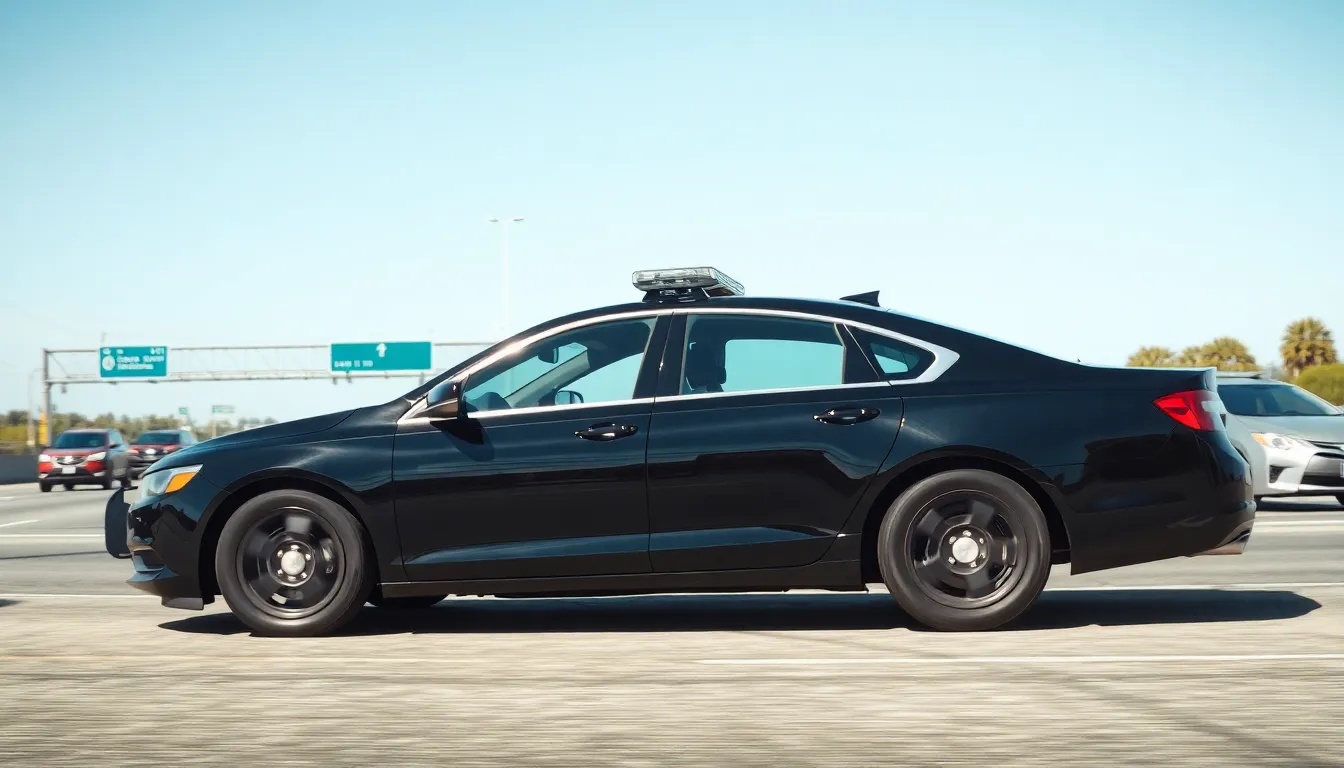We’ve all been there – cruising down the highway when suddenly we spot what looks like an ordinary sedan in our rearview mirror, only to realize it’s an undercover police car complete with hidden emergency lights. These stealthy law enforcement vehicles blend seamlessly into everyday traffic while officers conduct surveillance operations and traffic enforcement.
Understanding how to identify unmarked police cars isn’t just about avoiding speeding tickets. It’s about staying aware of your surroundings and recognizing the subtle signs that distinguish these vehicles from regular civilian cars. From antenna configurations to license plate patterns, there are exact indicators we can learn to spot.
Whether you’re a curious driver or simply want to enhance your road awareness, knowing what makes undercover police cars tick can transform how you navigate our streets. We’ll explore the intriguing area of these covert patrol vehicles and share the insider knowledge that’ll help you identify them before they identify you.
What Are Undercover Police Cars and Why Do They Matter?
Understanding these covert vehicles helps us become more aware drivers and better prepared for encounters with law enforcement on our roads.
Definition and Primary Purpose
Undercover police cars are unmarked law enforcement vehicles designed to blend seamlessly into regular traffic while officers conduct surveillance operations. We see these vehicles operating without traditional police markings like decals, light bars, or department logos that typically identify patrol cars. Officers use them for traffic enforcement, criminal investigations, and monitoring suspicious activities without alerting potential violators to their presence.
These vehicles serve multiple enforcement roles including speed monitoring, DUI checkpoints, and drug interdiction operations. We often encounter them during routine traffic stops where officers can observe natural driving behaviors before initiating contact. Many departments prefer undercover cars for highway patrol because they can position themselves strategically without causing the usual traffic slowdown that marked patrol cars create.
Legal Authority and Jurisdiction
Officers operating undercover police cars possess the same legal authority as those in marked patrol vehicles within their designated jurisdictions. We must understand that these officers can issue citations, make arrests, and conduct traffic stops with full legal backing from their respective departments. State police typically operate across entire states, while municipal officers work within city limits and county deputies patrol unincorporated areas.
Federal agencies like the DEA and FBI also use unmarked vehicles, though their jurisdiction extends nationwide for exact federal crimes. We should know that proper identification protocols require officers to display badges and credentials when making stops, regardless of vehicle type. Courts consistently uphold traffic stops made by officers in unmarked cars, provided they follow proper procedures and operate within their lawful jurisdiction.
Common Vehicle Types Used for Undercover Operations
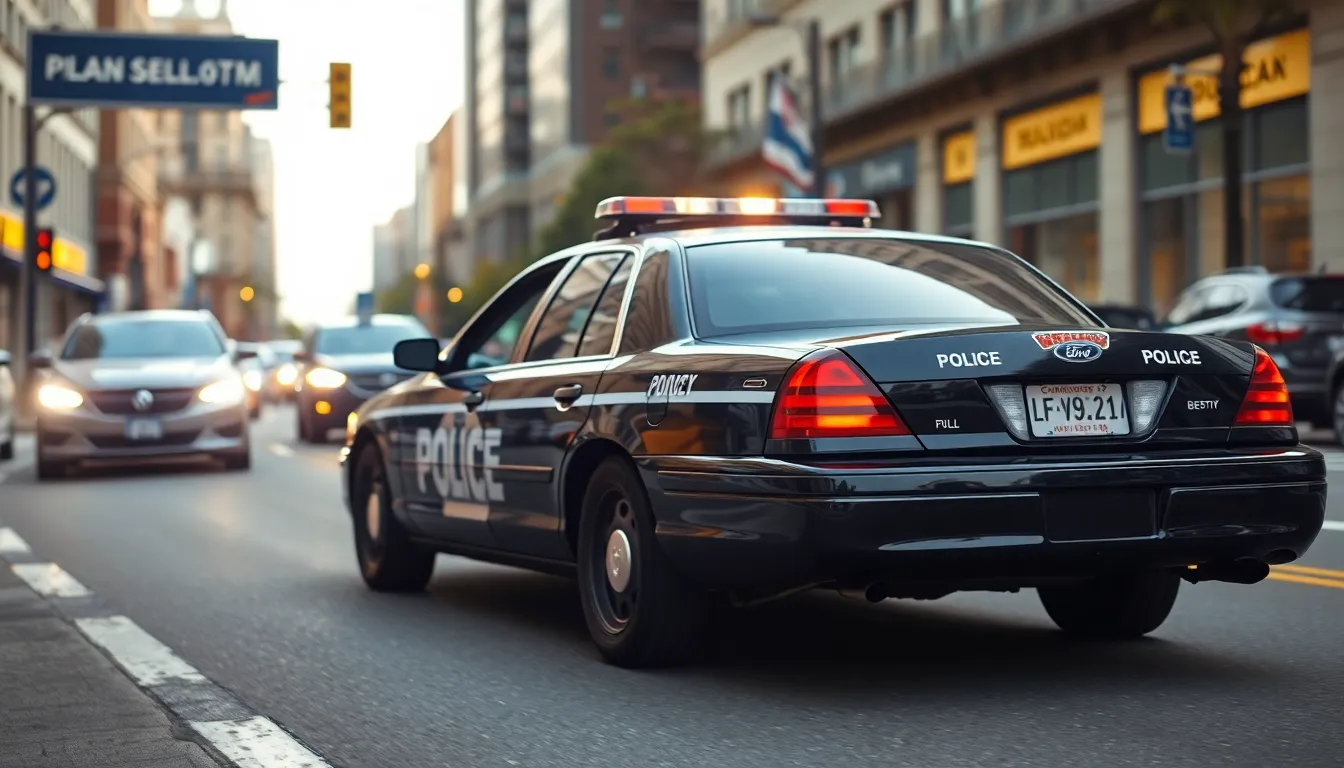
Law enforcement agencies strategically select vehicles that blend seamlessly into everyday traffic patterns. We’ve identified the most frequently used models across different categories to help you recognize these covert patrol units.
Popular Sedan Models
Ford Crown Victoria remains one of the most recognizable undercover vehicles even though discontinuation in 2011. Many departments still operate these models due to their durability and established fleet infrastructure. We often spot these vehicles with telltale signs like reinforced bumpers and additional antennas.
Chevrolet Impala serves as a common choice for modern undercover operations across many police departments. These sedans feature powerful V6 engines and spacious interiors that accommodate law enforcement equipment. Officers favor this model because it maintains an ordinary appearance while delivering reliable performance.
Dodge Charger provides aggressive styling that helps officers blend into urban environments where sports sedans are common. We notice these vehicles frequently in metropolitan areas where their muscular appearance doesn’t draw unwanted attention. The all wheel drive capability makes them suitable for various weather conditions and pursuit situations.
Ford Taurus offers a more subtle profile compared to traditional police interceptors. Departments choose this model for surveillance operations where maintaining anonymity is critical. We’ve observed these vehicles equipped with tinted windows and minimal external modifications.
SUVs and Crossovers
Chevrolet Tahoe dominates the SUV category for undercover operations due to its spacious interior and commanding road presence. We see these vehicles frequently used for drug enforcement and organized crime investigations. The large cargo area accommodates specialized surveillance equipment and multiple officers.
Ford Explorer provides versatility for both urban and rural operations while maintaining a civilian appearance. Many suburban police departments prefer this model because it blends perfectly with family vehicles. We notice these crossovers often feature subtle modifications like run flat tires and enhanced cooling systems.
Jeep Grand Cherokee offers excellent off road capabilities for operations in remote areas. Officers use these vehicles for wildlife enforcement and rural patrol duties. We’ve identified these models through their upgraded suspension systems and additional ground clearance.
Toyota 4Runner serves specialized units that require extreme reliability and durability. We observe these vehicles primarily in western states where terrain demands robust four wheel drive systems. The model’s reputation for longevity makes it cost effective for long term undercover assignments.
Pickup Trucks and Commercial Vehicles
Ford F150 represents the most popular choice for rural and highway enforcement operations. We encounter these trucks frequently on interstate corridors where they blend with commercial traffic. Officers appreciate the truck’s towing capacity and storage space for enforcement equipment.
Chevrolet Silverado provides similar capabilities to the F150 while offering different styling cues. Departments often choose this model to diversify their undercover fleet. We notice these vehicles equipped with tonneau covers to conceal specialized equipment.
Ram 1500 serves departments that need a distinctive appearance different from Ford and Chevrolet models. The truck’s aggressive styling helps officers blend into construction zones and industrial areas. We’ve spotted these vehicles with contractor style tool boxes that conceal surveillance gear.
Commercial vans and work trucks allow officers to conduct extended surveillance operations without detection. We see converted panel vans, utility trucks, and even tow trucks used for specialized investigations. These vehicles often feature one way windows and hidden camera systems for covert monitoring.
Key Features That Distinguish Undercover Police Cars

Several distinctive characteristics set undercover police vehicles apart from civilian cars. While these features are designed to remain subtle, trained observers can identify them with careful attention.
Hidden Emergency Equipment
Emergency lights remain cleverly concealed within the vehicle’s interior and exterior surfaces. We’ve observed strobes mounted behind the front grille, integrated into headlight assemblies, or positioned within the rear window area. Dashboard-mounted light bars often hide behind tinted visors or flip-down panels that activate during emergencies.
Siren speakers get strategically placed in locations that minimize visibility while maximizing sound projection. Officers typically install these components behind the front bumper or within wheel wells. Some departments use compact siren units that mount invisibly under the hood.
Additional electrical wiring becomes apparent through subtle modifications around the vehicle’s lighting systems. We notice extra toggle switches on the dashboard, modified fuse boxes, or small control panels that operate the concealed emergency equipment. Heavy-duty alternators and dual battery systems support these power-hungry additions.
Specialized Communication Systems
Multiple antenna configurations distinguish undercover vehicles from standard civilian cars. We identify various antenna types including whip antennas, magnetic mount units, and low-profile models designed for radio communication. These antennas often appear on the trunk lid, roof, or rear window.
Radio equipment occupies important space within the vehicle’s interior, typically mounted between the front seats or under the dashboard. Mobile data terminals (MDTs) or laptop mounting systems allow officers to access dispatch information and run license plate checks. We’ve seen these displays integrated into the center console or dashboard area.
Communication upgrades include enhanced electrical systems to support multiple radio frequencies. Officers need capability to communicate with dispatch, other units, and specialized task forces. These systems often require additional power outlets and modified wiring harnesses throughout the vehicle.
Reinforced Components and Safety Features
Heavy-duty suspension systems handle the additional weight of law enforcement equipment and frequent high-speed operations. We notice performance upgrades including enhanced shock absorbers, reinforced springs, and improved braking systems that exceed standard civilian specifications.
Push bars or bull bars mount discreetly on many undercover vehicles, though they’re less obvious than those on marked patrol cars. These protective devices help during vehicle pursuits or when officers need to move disabled vehicles. Some departments use removable or retractable versions.
Interior modifications provide secure storage for weapons, evidence, and sensitive equipment. We observe heavy-duty center consoles, reinforced door panels, and specialized mounting systems for shotguns or rifles. Partition barriers between front and rear seats appear in vehicles used for prisoner transport.
Additional safety equipment includes upgraded door locks, reinforced glass, and enhanced security systems. Officers often have remote start capabilities and advanced alarm systems to protect sensitive equipment when the vehicle is unattended.
How to Spot Undercover Police Cars on the Road
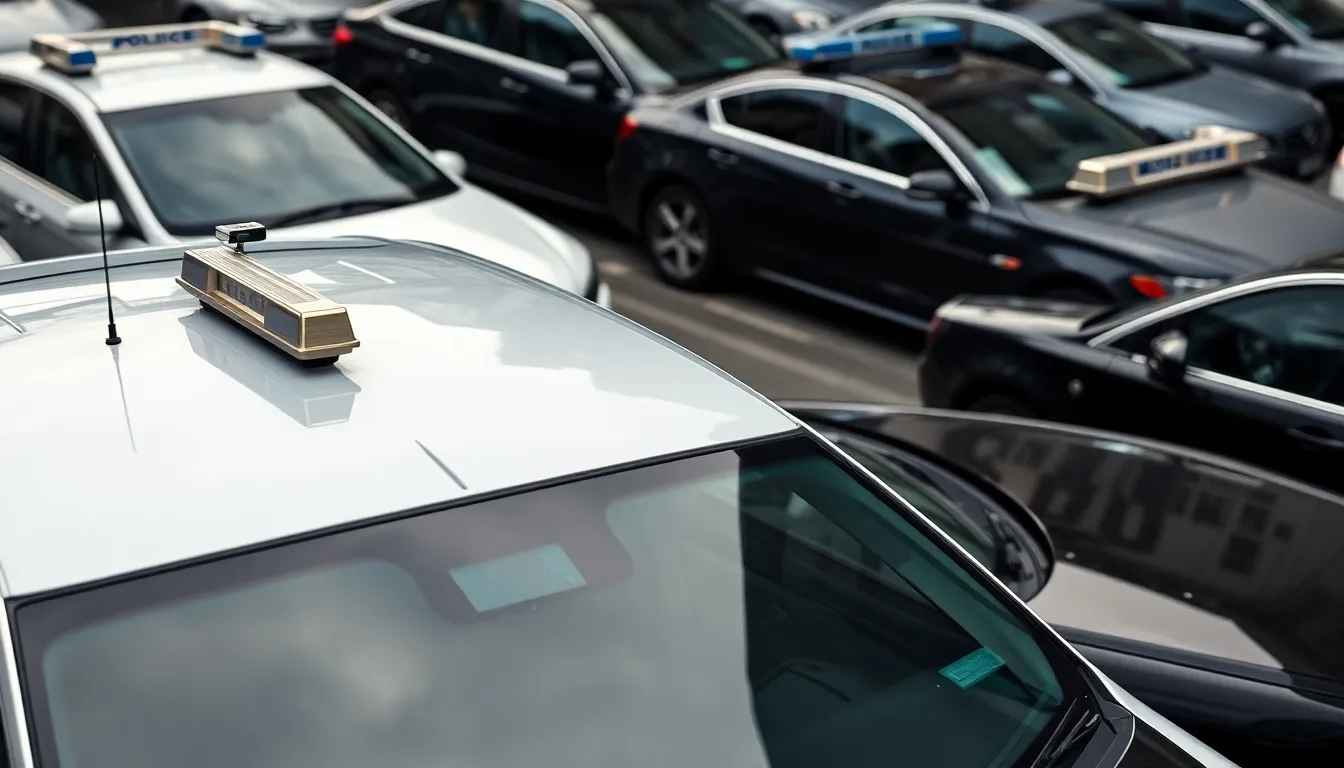
We’ll examine exact visual cues and behavioral patterns that help identify unmarked law enforcement vehicles in traffic. Recognizing these subtle indicators requires careful observation of details most drivers overlook.
Telltale Antenna Configurations
Multiple antennas clustered together represent the most reliable indicator of undercover police cars. We often observe 3-5 different antenna types mounted on the roof, trunk, or rear window of these vehicles. Short whip antennas for police radios typically appear alongside longer communication antennas for dispatch systems.
Magnetic mount antennas on the roof create temporary installations that officers can quickly remove when needed. We notice these antennas often have thick coaxial cables running from the mounting point toward the vehicle’s interior. GPS tracking antennas appear as small, square or circular units positioned near the rear window.
Communication arrays on unmarked vehicles frequently include specialized frequencies for interagency coordination. We observe that civilian vehicles rarely carry more than one or two antennas, making multiple antenna configurations a strong identification marker.
License Plate Patterns and Government Tags
Government license plates follow exact numbering patterns that differ from standard civilian plates. We identify these plates by their sequential numbering systems, often featuring letter-number combinations like “G123456” or state-exact government designations.
Fleet vehicle plates display consistent formatting across police departments within the same jurisdiction. We notice these plates typically lack county identification stickers or personalized elements found on civilian vehicles. Municipal plates often include abbreviated city or county codes embedded in the numbering sequence.
Exempt plates eliminate the need for registration renewal stickers, appearing clean without the typical corner decals. We observe that some departments use standard civilian plates as additional camouflage, though these vehicles still maintain government registration records.
Driver Behavior and Vehicle Positioning
Officers in undercover cars maintain exact positioning patterns while monitoring traffic flow. We observe these vehicles often traveling in the right or center lanes at consistent speeds slightly below traffic flow. Strategic positioning behind groups of vehicles allows officers to observe multiple lanes simultaneously.
Professional driving behaviors distinguish law enforcement operators from typical commuters. We notice undercover officers maintain greater following distances and execute smoother lane changes without aggressive acceleration or braking. Radio communication creates brief periods where drivers appear distracted while focusing on dispatch information.
Surveillance positioning includes extended periods in parking areas near highway onramps or popular enforcement zones. We observe these vehicles often idle in locations with clear sightlines to monitor approaching traffic patterns before captivating in pursuit activities.
Technology Integration in Modern Undercover Units
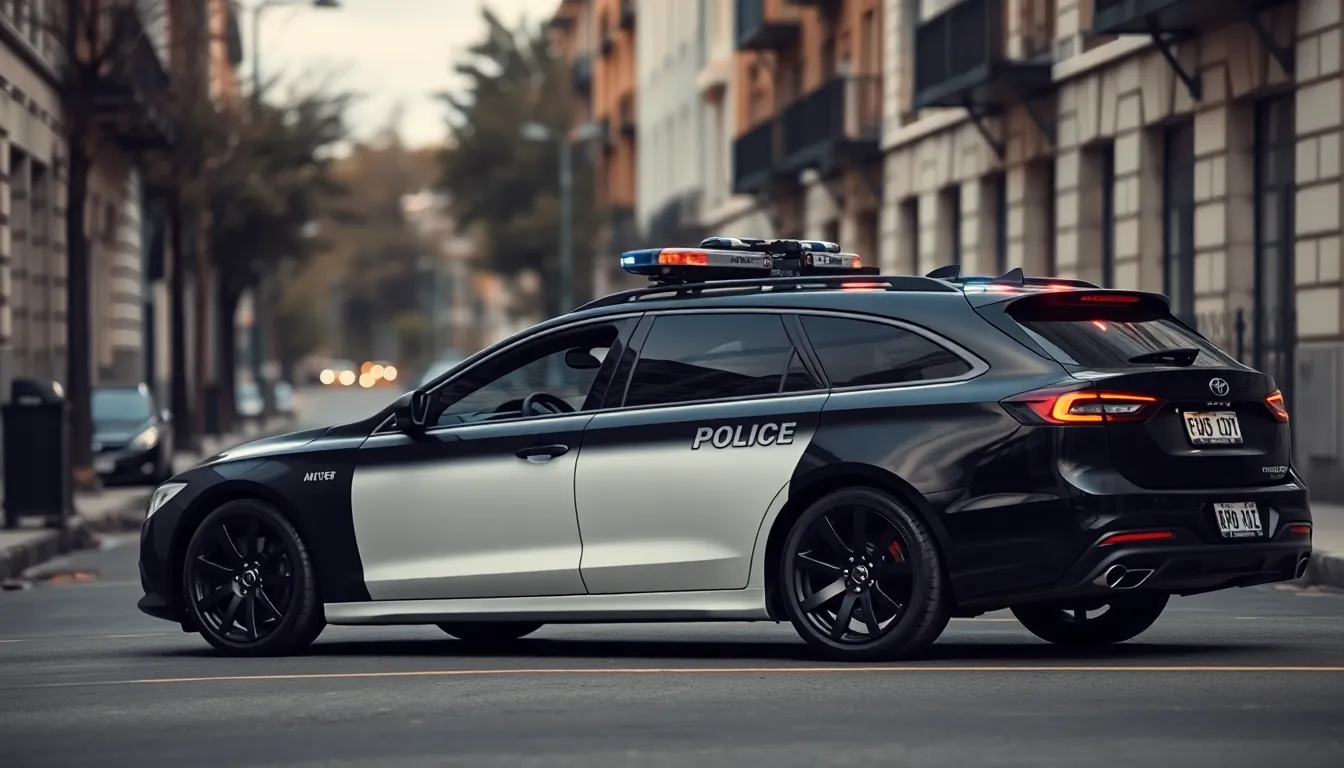
Today’s undercover police vehicles incorporate cutting-edge technology that transforms them into mobile command centers. We’ve witnessed a remarkable evolution in how law enforcement integrates sophisticated equipment while maintaining complete invisibility to the public eye.
Advanced Surveillance Equipment
Thermal imaging cameras represent the pinnacle of covert observation technology in modern undercover units. Officers can monitor suspects through walls and in complete darkness using these heat-detecting systems that mount discretely within vehicle interiors. License plate recognition systems automatically scan and cross-reference thousands of plates per hour against law enforcement databases.
Long-range optical surveillance equipment includes telephoto lenses and stabilized camera mounts that capture clear footage from distances exceeding 500 yards. Night vision capabilities extend operational hours into complete darkness while maintaining video quality standards required for court proceedings. Directional microphones can isolate conversations from background noise at ranges up to 300 feet away.
Real-time facial recognition software processes video feeds instantly and alerts officers when known suspects appear within the surveillance zone. Biometric scanners integrated into mobile workstations provide immediate identity verification during field operations. Motion detection sensors automatically trigger recording systems when suspicious activity occurs within predetermined monitoring areas.
GPS Tracking and Communication Tools
Encrypted communication networks connect undercover units directly to dispatch centers without revealing their locations to scanner enthusiasts. Officers receive priority channels that bypass standard radio traffic and maintain operational security during sensitive investigations. Multi-frequency radios allow seamless coordination between federal agencies, state police, and local departments.
Real-time GPS coordination enables command centers to track multiple undercover vehicles simultaneously across large geographic areas. Fleet management systems optimize patrol routes and response times while maintaining cover stories for extended surveillance operations. Location data integrates with crime mapping software to predict suspect movement patterns.
Satellite communication backup systems ensure connectivity in remote areas where cellular towers provide inadequate coverage. Mobile data terminals access national crime databases instantly and cross-reference suspect information across multiple jurisdictions. Emergency beacon technology automatically transmits officer location data when panic buttons activate during dangerous encounters.
Digital Recording Systems
Multi-camera recording arrays capture 360-degree footage around undercover vehicles using strategically positioned miniature cameras. Internal recording systems document all interactions between officers and suspects to protect against false accusations and ensure proper procedures. High-definition video storage systems can retain up to 30 days of continuous footage on solid-state drives.
Audio recording equipment includes wireless microphones that transmit clear conversations to central recording units without visible wires or equipment. Voice activation technology conserves storage space by recording only when conversations occur within preset volume thresholds. Digital timestamps synchronize with GPS data to provide precise location and time verification for court evidence.
Cloud-based evidence management automatically uploads recorded footage to secure servers that maintain chain of custody documentation. Encryption protocols protect sensitive recordings from unauthorized access while allowing authorized personnel to review evidence remotely. Backup recording systems prevent data loss during equipment failures or hostile encounters that might damage primary recording devices.
Different Types of Undercover Police Operations
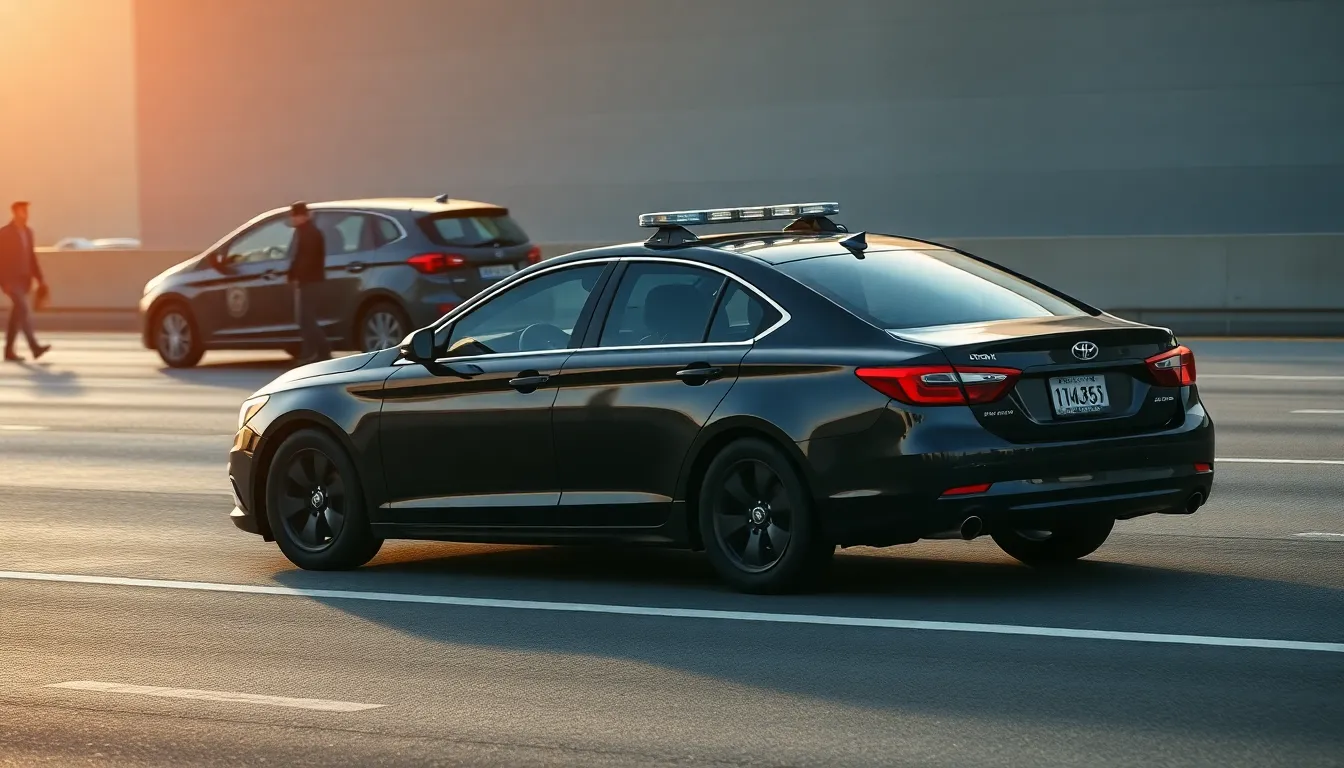
Undercover police cars serve multiple specialized roles beyond routine traffic patrol. Understanding these different operational categories helps us recognize how unmarked vehicles function in various law enforcement scenarios.
Traffic Enforcement and Speed Detection
Traffic enforcement operations represent the most common use of undercover police cars we encounter daily. Officers position these unmarked vehicles strategically along highways and busy streets to monitor speed violations without alerting drivers to their presence. Speed detection units often use advanced radar and lidar technology concealed within civilian looking vehicles, allowing officers to capture accurate readings while remaining undetected.
Moving violations beyond speeding also fall under this operational category. Officers observe aggressive driving behaviors such as tailgating, improper lane changes, and distracted driving patterns. Seat belt compliance checks become more effective when conducted from unmarked vehicles, as drivers display natural behaviors rather than adjusting their actions upon seeing marked patrol cars.
DUI checkpoints frequently incorporate undercover units positioned upstream from the main checkpoint location. These vehicles identify potentially impaired drivers approaching the checkpoint and can pursue vehicles that attempt to avoid the screening process. Mobile DUI enforcement allows officers to patrol entertainment districts and monitor bars during peak hours without creating obvious law enforcement presence.
Drug Interdiction and Narcotics Operations
Drug interdiction operations use unmarked vehicles extensively for highway surveillance and trafficking route monitoring. Officers patrol known drug corridors using vehicles that blend seamlessly with commercial and civilian traffic patterns. Interstate drug transportation often involves rental cars and common sedan models, making unmarked police cars ideal for this type of surveillance work.
Narcotics task forces deploy undercover vehicles to monitor suspected drug dealers and distribution networks. Long term surveillance operations require officers to maintain cover for extended periods while documenting criminal activities and building cases. Vehicle stops initiated by undercover units often lead to important drug seizures when officers observe suspicious driving patterns or traffic violations.
Border patrol regions see increased use of unmarked vehicles to detect smuggling operations. Officers monitor remote highways and secondary roads where drug traffickers attempt to avoid traditional checkpoint locations. K9 units operating from unmarked vehicles provide additional detection capabilities while maintaining operational secrecy.
Gang Surveillance and Organized Crime
Gang surveillance operations depend heavily on unmarked police cars to monitor criminal organizations without compromising ongoing investigations. Officers track known gang members and document their movements, associations, and activities using vehicles that don’t attract attention in targeted neighborhoods. Surveillance teams often coordinate multiple unmarked units to maintain continuous observation while avoiding detection.
Organized crime investigations require sophisticated undercover vehicle operations spanning weeks or months. Financial crimes, money laundering schemes, and racketeering cases benefit from long term surveillance capabilities that marked patrol cars cannot provide. Officers gather intelligence on criminal enterprises by monitoring meetings, transactions, and organizational structures.
Federal agencies collaborate with local police departments using unmarked vehicles for multi jurisdiction investigations. Task forces targeting organized crime syndicates use various vehicle types to match the operational environment and maintain cover across different geographical areas. Wiretap investigations often incorporate mobile surveillance units that can respond quickly to intercepted communications while remaining undetected.
Legal Considerations and Public Rights
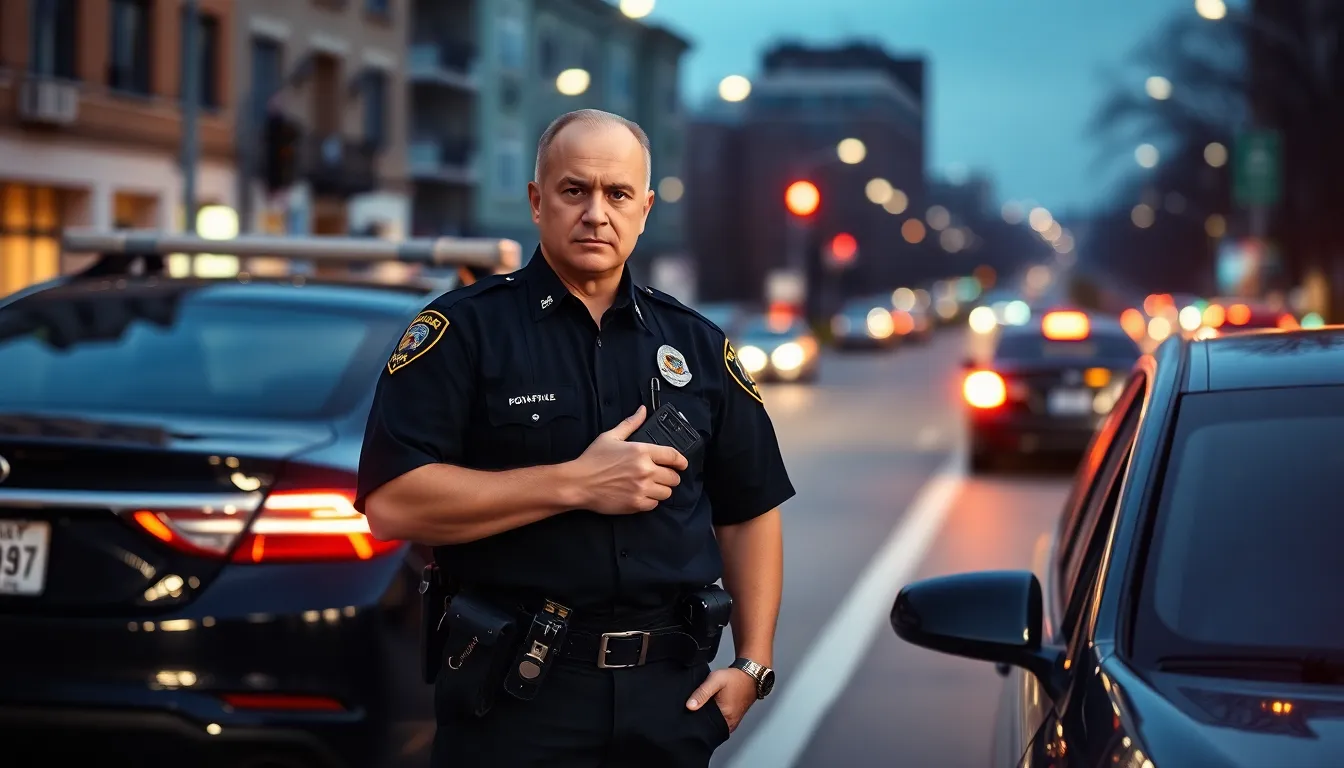
Understanding legal procedures helps protect both officers and citizens during undercover police encounters. We’ll explore essential protocols that govern these interactions and your rights as a driver.
Traffic Stop Procedures and Protocols
Unmarked police vehicles must follow exact identification procedures during traffic stops. Officers are required to present proper identification immediately upon request, including their badge number and department credentials. State laws typically mandate that undercover officers activate emergency equipment like flashing lights or sirens to signal a legitimate stop.
Verification protocols include radio communication with dispatch to confirm the officer’s identity and location. Most jurisdictions require officers to call in their vehicle number and badge identification before initiating contact. Documentation procedures mandate that officers record the reason for the stop and any subsequent actions taken.
Emergency equipment activation serves as the primary legal requirement for initiating traffic stops. Officers must use visible warning devices like concealed strobe lights, LED arrays, or magnetic emergency beacons. Audio signals through hidden PA systems or electronic sirens provide additional verification of legitimate law enforcement activity.
Communication standards require officers to clearly identify themselves and state the reason for the stop. Many departments mandate body-worn cameras or dashboard recording systems to document all interactions. Radio protocols ensure that supervisors can monitor ongoing traffic stops through regular check-ins and status updates.
Evidence Collection Standards
Evidence gathered during undercover operations must meet strict admissibility requirements in court. Officers must demonstrate reasonable suspicion or probable cause for initiating contact with suspects. Chain of custody procedures ensure that all collected evidence maintains its integrity from collection through court presentation.
Documentation requirements include detailed reports describing the circumstances leading to evidence collection. Time stamps, witness statements, and photographic evidence help establish the validity of seized materials. Digital evidence like surveillance footage requires exact handling protocols to prevent tampering or corruption.
Search and seizure protocols limit officers’ authority during traffic stops involving unmarked vehicles. Plain view doctrine allows officers to collect visible contraband without additional warrants. Consent searches require clear verbal agreement from vehicle occupants, often recorded on body cameras for verification.
Technology evidence standards govern the use of surveillance equipment and recording devices in undercover cars. GPS tracking data must include proper timestamps and location verification to be admissible in court. License plate recognition systems require calibration records and accuracy documentation for legal proceedings.
Citizens’ Rights During Encounters
Drivers have exact rights when stopped by unmarked police vehicles that officers must respect. You can request proper identification before complying with orders, including asking for badge numbers and department contact information. Miranda rights apply when questioning moves beyond basic traffic violation inquiries.
Verification rights allow citizens to ask officers to call dispatch for identity confirmation. You can request that marked patrol units respond to verify the legitimacy of undercover officers. Emergency services like 911 can confirm whether an active police stop is occurring at your location.
Refusal rights include declining consent searches of your vehicle without probable cause or a warrant. You can remain silent beyond providing required documents like driver’s license, registration, and insurance information. Recording the interaction with personal devices is generally permitted under First Amendment protections.
Legal representation access becomes relevant if questioning extends beyond routine traffic matters. You can request attorney contact if arrests or criminal charges seem likely. Court challenges to evidence collected during improper stops by unmarked vehicles often succeed when proper procedures aren’t followed.
Safety considerations allow drivers to request marked backup units if they feel unsafe during unmarked vehicle stops. You can drive slowly to well-lit public areas before stopping if genuinely concerned about officer legitimacy. Emergency dispatchers can confirm active police operations in your area during questionable encounters.
Regional Variations Across Different States
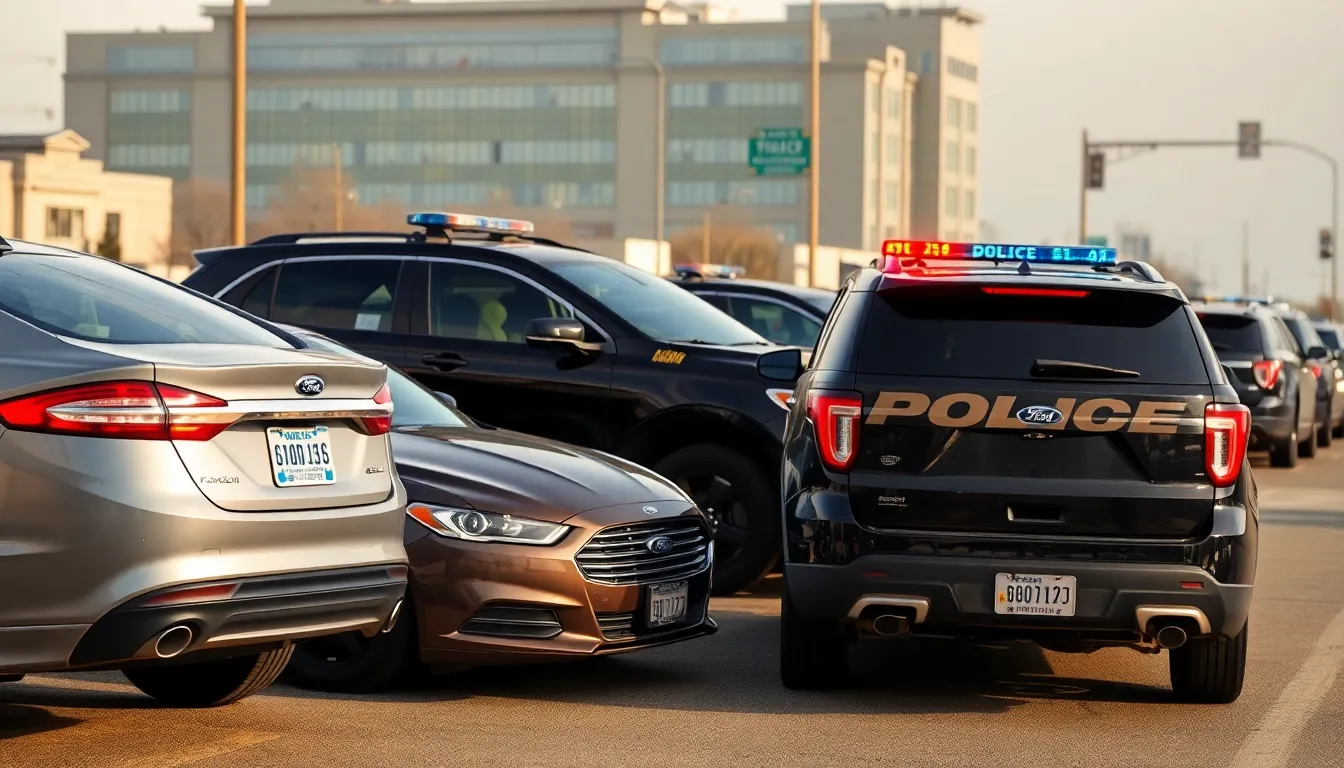
Law enforcement agencies across the United States employ different approaches to undercover vehicle deployment based on regional needs and budget allocations. These variations reflect local traffic patterns, crime demographics, and departmental traditions that shape how unmarked patrol units operate in different areas.
East Coast Department Preferences
East Coast police departments typically favor compact sedans and hybrid vehicles for their undercover fleets due to dense urban environments and fuel efficiency requirements. The Ford Fusion Hybrid ranks as the top choice among departments in New York, Massachusetts, and Connecticut, offering 40+ miles per gallon while maintaining professional appearance. Chevrolet Malibu and Honda Accord models follow closely behind, with over 60% of northeastern departments utilizing these platforms for routine surveillance operations.
Urban density drives equipment preferences in cities like Boston, Philadelphia, and Washington D.C., where departments install multiple communication arrays to maintain connectivity in high-rise areas. We observe that East Coast units frequently mount 4-6 different antenna types compared to rural departments that use 2-3 configurations. Parking enforcement and traffic monitoring represent primary functions, with undercover vehicles positioned strategically during rush hour periods from 7-9 AM and 4-6 PM.
License plate patterns on the East Coast often incorporate state abbreviations with sequential numbering systems that differ from standard civilian formats. New Jersey uses “MG” prefixes followed by four digits, while Pennsylvania employs “P” designations with mixed alphanumeric combinations. Budget allocations in these regions typically dedicate 15-20% of vehicle procurement funds to unmarked units, reflecting the emphasis on covert operations in densely populated areas.
West Coast and Mountain State Trends
West Coast departments prioritize SUVs and crossover vehicles to handle diverse terrain and extended patrol coverage areas. The Ford Explorer Police Interceptor dominates California Highway Patrol and Washington State Police fleets, accounting for 45% of unmarked vehicle purchases since 2020. Chevrolet Tahoe and Dodge Durango models serve as secondary choices, particularly for agencies covering mountainous regions and rural highways where ground clearance becomes essential.
Technology integration reaches advanced levels in states like California, Oregon, and Colorado, where departments invest heavily in surveillance equipment and communication systems. We find that West Coast undercover units typically carry automatic license plate recognition systems, with some departments reporting 200+ daily scans per vehicle during active patrols. GPS tracking capabilities and real-time data sharing networks enable coordination across multiple jurisdictions, especially important for interstate drug trafficking investigations.
Mountain state deployment strategies focus on highway interdiction and rural crime prevention, with agencies in Montana, Wyoming, and Idaho utilizing pickup trucks and commercial-style vehicles. The Ford F-150 and Chevrolet Silverado serve dual purposes as patrol vehicles and equipment transport, often equipped with camper shells or work bed configurations that enhance concealment. Fuel efficiency becomes less critical than range and durability, with departments prioritizing vehicles capable of 400+ mile continuous operations.
Southern State Deployment Strategies
Southern police departments emphasize versatility and heat resistance in their undercover vehicle selections, choosing models with robust cooling systems and comfortable interiors for extended surveillance operations. The Dodge Charger remains the preferred sedan across Texas, Florida, and Georgia departments, offering pursuit capabilities while maintaining civilian appearance during routine operations. Chevrolet Impala and Ford Taurus models provide secondary options, particularly for departments with smaller budgets or exact operational requirements.
Heat management drives equipment placement decisions in states like Arizona, Louisiana, and Alabama, where departments modify vehicles with additional cooling systems and tinted windows to protect sensitive electronics. We observe that Southern units often feature reinforced air conditioning systems and specialized ventilation for extended stationary surveillance during summer months when temperatures exceed 100°F. Communication equipment requires weatherproofing and heat shielding to maintain functionality during extreme weather conditions.
Drug interdiction operations influence vehicle choices along the I-10, I-20, and I-40 corridors, where departments deploy commercial-style vans and work trucks to monitor trafficking routes. Tennessee, Arkansas, and North Carolina agencies frequently use Ford Transit vans and Ram ProMaster vehicles disguised as service or delivery trucks. These platforms accommodate specialized surveillance equipment while providing natural cover for extended monitoring operations at truck stops and highway rest areas.
Budget and Procurement Process for Police Departments
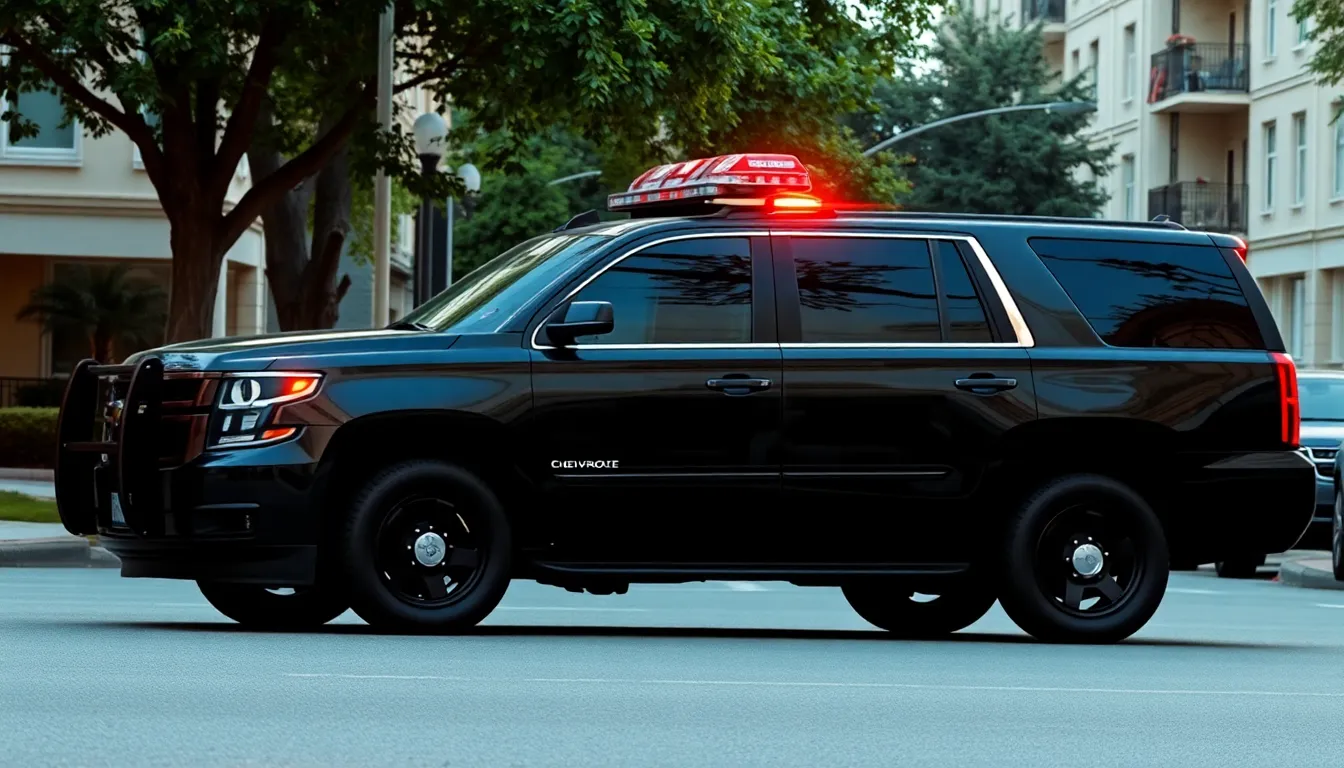
Police departments allocate substantial resources to undercover vehicle programs through carefully structured budget processes. We’ll examine the financial considerations and operational factors that shape these critical law enforcement investments.
Cost Factors and Funding Sources
Initial vehicle acquisition costs represent the largest expense in undercover fleet development. Departments typically spend $35,000 to $55,000 per vehicle for popular models like the Ford Explorer or Chevrolet Tahoe before modifications.
Conversion expenses add important costs to the procurement process. Installing concealed emergency equipment ranges from $8,000 to $15,000 per vehicle, including hidden light systems, upgraded electrical components, and reinforced mounting hardware.
Federal grant programs provide crucial funding streams for many departments. The Edward Byrne Memorial Justice Assistance Grant distributes approximately $250 million annually to state and local agencies, with undercover vehicle programs eligible for these allocations.
State funding initiatives supplement federal resources through dedicated law enforcement programs. California’s Vehicle Abatement Program and Texas Border Security initiatives exemplify state level support for specialized patrol units requiring unmarked vehicles.
Asset forfeiture funds contribute substantial resources to undercover operations in many jurisdictions. Departments can reinvest seized assets from drug investigations into equipment purchases, creating a direct link between enforcement success and fleet expansion.
| Funding Source | Average Annual Amount | Primary Use |
|---|---|---|
| Federal Grants | $15,000-$50,000 | Vehicle acquisition |
| State Programs | $10,000-$35,000 | Equipment upgrades |
| Asset Forfeiture | $25,000-$75,000 | Fleet expansion |
| Municipal Budget | $40,000-$120,000 | Operations/maintenance |
Maintenance and Lifecycle Management
Fleet replacement cycles typically span 5 to 7 years for undercover vehicles in active service. High mileage units conducting highway patrol duties require replacement sooner than those used primarily for surveillance operations.
Preventive maintenance schedules become more complex due to specialized equipment installations. Departments schedule service every 3,000 to 5,000 miles, with additional inspections for concealed lighting systems and communication equipment.
Cost tracking systems help departments monitor total ownership expenses beyond initial purchase prices. Annual operating costs average $12,000 to $18,000 per vehicle, including fuel, insurance, repairs, and equipment updates.
Resale considerations factor into lifecycle planning as departments must remove all law enforcement equipment before disposal. Conversion back to civilian specifications costs $2,000 to $4,000 per vehicle, reducing residual values significantly.
Mileage thresholds trigger replacement decisions when vehicles reach 80,000 to 120,000 miles depending on usage patterns. Urban surveillance units typically last longer than highway patrol vehicles subjected to continuous high speed operations.
Equipment Upgrade Schedules
Technology refresh cycles occur every 3 to 5 years to maintain operational effectiveness. Communication systems require the most frequent updates as encryption standards and radio protocols evolve rapidly.
Emergency equipment updates follow manufacturer recommendations and regulatory changes. LED light systems installed in 2020 may require replacement by 2027 due to improved efficiency standards and visibility requirements.
Surveillance technology upgrades represent important investment decisions for departments. License plate recognition systems cost $15,000 to $25,000 per vehicle and typically receive updates every 4 to 6 years.
Communication system overhauls align with regional radio system upgrades mandated by federal agencies. P25 compliance requirements have forced many departments to replace entire communication packages costing $8,000 to $12,000 per vehicle.
Performance monitoring systems track equipment reliability and replacement needs. Departments maintain databases showing failure rates, repair costs, and operational downtime to optimize upgrade timing and vendor selection.
Budget planning horizons extend 5 to 10 years ahead to accommodate major technology transitions. Departments anticipate electric vehicle conversions, advanced surveillance systems, and enhanced communication networks in future procurement cycles.
Future Trends in Undercover Police Vehicle Technology
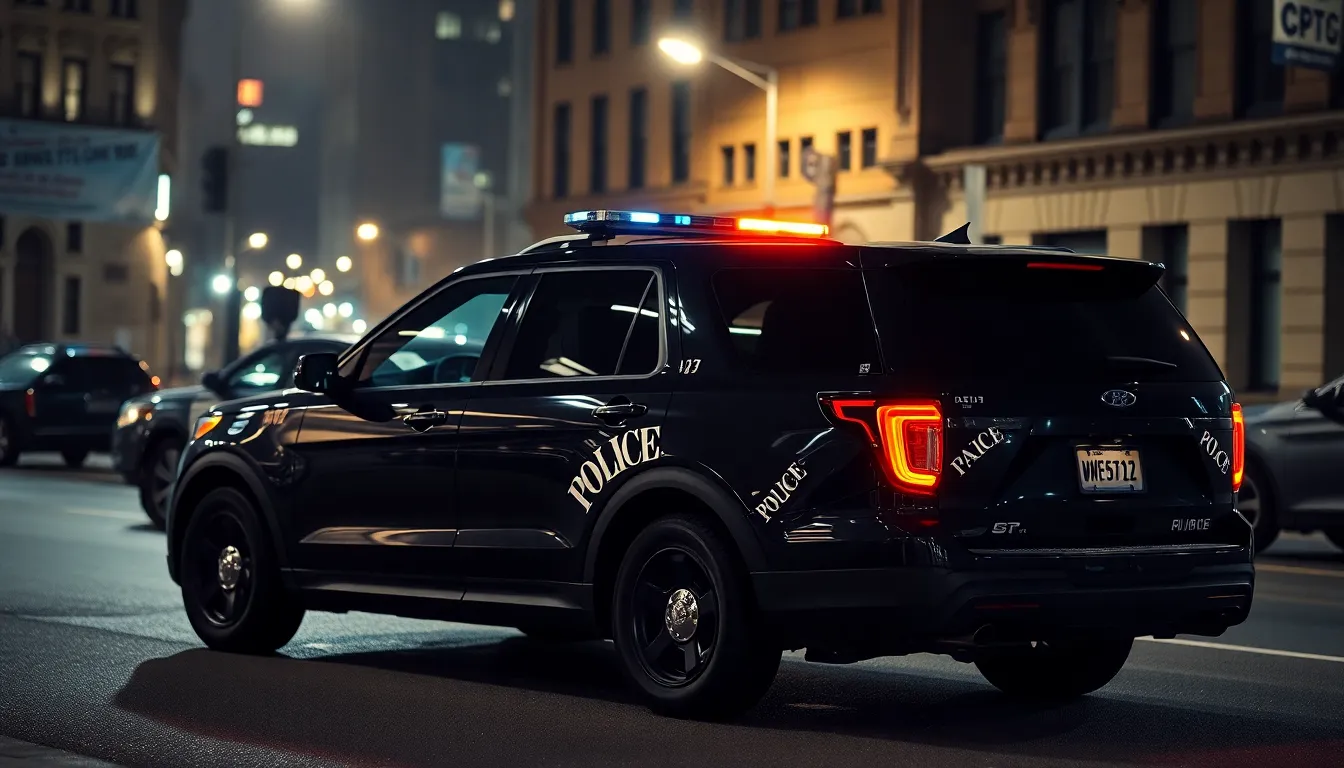
We’re witnessing a technological revolution that’s reshaping undercover police operations through cutting-edge innovations. Advanced systems are transforming these covert units into sophisticated enforcement tools.
Electric and Hybrid Integration
Electric undercover vehicles are becoming standard equipment for departments nationwide as departments prioritize sustainability and operational efficiency. Tesla Model S sedans now serve undercover units in California and Nevada, offering silent operation capabilities that enhance stealth during surveillance missions. Ford Police Interceptor Utility Hybrid models provide 24 mpg combined fuel economy while maintaining pursuit performance standards that officers require.
Battery technology advances enable 300+ mile ranges in electric patrol vehicles, eliminating range anxiety concerns during extended operations. Departments report 40-60% lower fuel costs annually when deploying hybrid undercover fleets compared to traditional gasoline engines. Silent operation modes allow officers to approach suspects without engine noise detection, particularly valuable during nighttime surveillance operations.
Charging infrastructure development supports rapid deployment across jurisdictions, with Level 3 charging stations reducing downtime to 30 minutes for 80% battery capacity. Installation costs for department charging equipment average $15,000-25,000 per station, offset by reduced maintenance expenses over vehicle lifecycles.
Enhanced Surveillance Capabilities
Artificial intelligence integration transforms undercover vehicles into mobile surveillance centers equipped with predictive analytics and real-time threat assessment. Facial recognition systems now process 500+ faces per minute through advanced camera arrays, automatically flagging suspects from federal databases during routine patrols. License plate recognition technology achieves 99.2% accuracy rates while scanning vehicles at highway speeds up to 85 mph.
Thermal imaging cameras detect heat signatures through building materials and vehicle surfaces, enabling officers to monitor suspect activities from distances exceeding 1,000 yards. Advanced audio surveillance equipment captures conversations within 200-foot perimeters using directional microphone arrays and noise filtering algorithms.
360-degree camera systems record high-definition footage simultaneously from multiple angles, creating comprehensive evidence packages for court proceedings. Cloud-based storage answers provide unlimited capacity for video documentation while enabling secure access from multiple devices and locations. Real-time video streaming allows command centers to monitor active operations and provide tactical support during critical incidents.
Drone integration capabilities enable undercover units to deploy aerial surveillance assets directly from concealed vehicle compartments, extending operational reach beyond traditional ground-based limitations.
Autonomous Features and AI Integration
Self-driving technology enables unmanned surveillance operations where undercover vehicles patrol predetermined routes without officer presence, reducing personnel costs while maintaining continuous monitoring capabilities. Advanced driver assistance systems (ADAS) help officers maintain optimal following distances during suspect surveillance while preventing detection through erratic driving patterns.
Predictive policing algorithms analyze crime data patterns to automatically route undercover vehicles toward high-probability incident locations, increasing enforcement efficiency by 35-50% according to pilot programs in major cities. Machine learning systems adapt to local traffic patterns and suspicious behavior indicators, alerting officers to potential threats before human observation detects irregularities.
Voice recognition technology allows hands-free operation of communication systems, emergency equipment activation, and report generation while officers maintain visual focus on surveillance targets. Biometric security systems prevent unauthorized vehicle access through fingerprint and facial recognition protocols, protecting sensitive equipment from potential compromise.
GPS coordination systems automatically position multiple undercover units for optimal coverage during complex operations, using algorithmic spacing calculations to maximize surveillance effectiveness. Remote vehicle control capabilities enable command centers to assume driving control during high-risk pursuits or emergency situations, prioritizing officer safety while maintaining operational continuity.
Conclusion
We’ve equipped you with comprehensive knowledge about identifying undercover police vehicles and understanding their operational roles. From recognizing key visual indicators like antenna clusters and government license plates to understanding the advanced technology these vehicles carry modern unmarked units have evolved far beyond simple patrol cars.
The industry of undercover law enforcement continues advancing with electric vehicles artificial intelligence and enhanced surveillance capabilities. These developments reflect law enforcement’s commitment to maintaining public safety while adapting to changing traffic patterns and criminal activities.
Stay observant on the roads and remember that spotting these vehicles isn’t about evading law enforcement—it’s about developing better situational awareness. Understanding how undercover units operate helps us become more informed drivers and citizens while respecting the vital role these specialized vehicles play in keeping our communities safe.
Frequently Asked Questions
What are undercover police cars?
Undercover police cars are unmarked law enforcement vehicles designed to operate without traditional police markings. These vehicles allow officers to conduct surveillance, traffic enforcement, and monitor suspicious activities discreetly while blending in with regular traffic. Officers in these cars maintain the same legal authority as those in marked vehicles.
What are the most common vehicles used for undercover police operations?
Popular sedan models include Ford Crown Victoria, Chevrolet Impala, Dodge Charger, and Ford Taurus. SUVs like Chevrolet Tahoe, Ford Explorer, and Jeep Grand Cherokee are also common. Pickup trucks such as Ford F150, Chevrolet Silverado, and commercial vans are used for specific operations and rural enforcement.
How can I identify an undercover police car on the highway?
Look for multiple antennas clustered together (typically 3-5 different types), government license plates with specific numbering patterns, and concealed emergency equipment. Officers often display professional driving behaviors like maintaining consistent speeds slightly below traffic flow and strategic positioning to monitor other vehicles effectively.
What technology do modern undercover police cars use?
Modern undercover units feature sophisticated surveillance equipment including thermal imaging cameras, license plate recognition systems, facial recognition software, and GPS tracking. They also have encrypted communication networks, digital recording systems with multi-camera arrays, and mobile data terminals for real-time information access.
What are my rights during a traffic stop with an undercover police car?
You have the right to request proper identification from the officer and verify their legitimacy. Officers must present credentials and activate emergency equipment during stops. You can refuse consent searches and should ensure reasonable suspicion exists for any search. All interactions must follow proper legal protocols for evidence admissibility.
Do undercover police cars vary by region?
Yes, regional variations exist based on local traffic patterns and crime demographics. East Coast departments prefer compact sedans for urban environments, West Coast agencies favor SUVs for diverse terrains, and Southern departments emphasize heat-resistant vehicles. These variations influence equipment preferences, license plate patterns, and operational focuses.
What types of operations do undercover police cars conduct?
Undercover vehicles are used for traffic enforcement, speed detection, DUI checkpoints, drug interdiction, gang surveillance, and organized crime investigations. They’re strategically positioned to monitor violations and aggressive driving while conducting long-term surveillance operations. Their primary advantage is maintaining operational secrecy while enhancing enforcement effectiveness.
How much do undercover police car programs cost?
Initial vehicle acquisition costs range from basic conversions to fully equipped units. Departments rely on federal grants, state programs, and budget allocations for funding. Expenses include vehicle purchase, equipment upgrades, maintenance, and technology refresh cycles. Lifecycle management practices help maximize operational effectiveness while controlling costs.

